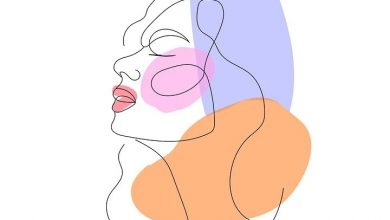In “Walking in the City,” Michel de Certeau explores the everyday practices and experiences of individuals within the urban environment. He compares the views of urban planners and architects, who see the city from the top down, with the actions of pedestrians who utilize the city streets.
Walking in the city, according to De Certeau, is a form of resistance and agency as well as a mode of transit. He contends that pedestrians build their own tales and routes inside the urban landscape via their daily activities. They utilize the streets, sidewalks, and other public spaces in ways that are not necessarily consistent with the original design or use.
Individual activities of walking and navigating the city are appropriated tactically or strategically. Pedestrians discover methods to express their own needs and preferences, calling into question the fixed and controlled nature of urban places. Individuals actively shape the urban environment by engaging with the city in their own distinctive ways.
De Certeau’s work highlights the significance of everyday practices in the construction of the city and emphasizes the agency of individuals within urban spaces. Through walking and other everyday activities, people find creative ways to navigate, subvert, and make sense of their surroundings, contributing to the ongoing production of the city as a lived experience.
Walking in the City | Summary
Michel de Certeau investigates the notion of walking within the urban environment and how it impacts our experiences and relationships in the city in Chapter 11. Walking in the city, according to De Certeau, is more than just a means of getting from one place to another; it is a significant exercise. Individuals actively engage with and make sense of their urban environment through these routine walking practices. Pedestrians bring their own wishes, needs, and interpretations to the urban landscape, whereas architects and planners design and impose their vision on the city.
The act of walking becomes a form of resistance and subversion within the city. De Certeau suggests that pedestrians assert their agency by appropriating and transforming the city space according to their own preferences. They move through the streets, sidewalks, and public spaces in ways that vary from the intended design or function. By doing so, pedestrians create their own narratives and paths, reclaiming the city as their own.
De Certeau introduces the idea of walking, referring to the creative strategies individuals employ to negotiate and maneuver through the city. These tactics are a response to the structured and regulated nature of urban spaces. Pedestrians find alternative routes, shortcuts, and detours, bending the city to their own will. Through these everyday practices, individuals challenge the fixed and ordered nature of the city, expressing their autonomy, and making the city a more personalized and lived experience.
De Certeau emphasizes the importance of everyday life and the activity of humans in influencing the urban environment by investigating urban walking practices. According to De Certeau, walking in the city is more than simply a way to move from one location to another; it is also an important kind of exercise. It demonstrates the active role that pedestrians play in the continuing creation and perception of urban places, adding to the rich fabric of urban life.
Walking in the City | Analysis
De Certeau supports his arguments with rich case studies and observations. He investigates pedestrian practices in New York City and describes their daily routines, such as walking, window shopping, and navigating public transit. These empirical examples provide concrete evidence and lend credibility to his theoretical claims.
The chapter employs an ethnographic approach, emphasizing the importance of lived experiences and the “voice” of pedestrians. De Certeau immerses himself in the urban environment, observing and interacting with individuals to gain insights into their daily routines, habits, and creative strategies for appropriating urban spaces. This ethnographic lens enhances the depth and authenticity of his analysis.
De Certeau’s study is set within a larger historical and cultural framework. He analyses urban space evolution, modifications across time, and the social and cultural influences that shape them. He uncovers the complicated interplay between urban settings, power relations, and human experiences by contextualizing his observations.
De Certeau integrates several perspectives to provide a sophisticated study of city walking. This multidisciplinary approach enhances the study and enables a complete exploration of the problem.
Throughout the chapter, de Certeau criticizes dominating power arrangements in urban settings. He reveals how urban planning and architecture frequently reinforce hierarchical hierarchies that constrain individuals’ agency. By highlighting the creative tactics employed by pedestrians, he challenges these power structures and calls for a more inclusive and participatory approach to urban design.
By analyzing the material and information within the chapter, we gain a deeper understanding of de Certeau’s methodology, the empirical evidence supporting his arguments, and the theoretical frameworks he draws upon. This analysis reveals the meticulous research, observational rigor, and critical insights that underpin his exploration of walking in the city.
Walking in the City | Important Quotes
“The ordinary practitioners of the city…make use of spaces that cannot be seen…Their own walking thus creates a space-time.”
This quote highlights the agency and creativity of pedestrians in creating their own meaningful spaces within the city, emphasizing how their walking practices shape their experience of urban environments.
“The networks of these moving, intersecting writings compose a manifold story that has neither author nor spectator, shaped out of fragments of trajectories and alterations of spaces.”
Here, de Certeau emphasizes the interconnectedness and multiplicity of narratives within the city. The actions of pedestrians, their paths, and detours, collectively contribute to the creation of a diverse and ever-evolving urban story.
“These actants are not individuals, but are determined by the necessity and peculiarity of a syntagm that carries off and combines their differences while keeping them in communication.”
The concept of actants highlights how various elements in the city, such as pedestrians, buildings, and objects, interact and communicate with each other. It underscores the relational nature of urban spaces and the interconnectedness of different components within the urban fabric.
“The walking of passers-by offers a series of turns (tours) and detours that can be compared to ‘turns of phrase’ or ‘stylistic figures.'”
This quote draws a parallel between walking and linguistic expression, suggesting that the movements of pedestrians through the city can be understood as a form of “spatial language.” It implies that walking encompasses creative and rhetorical elements, akin to the use of figures of speech in verbal communication.
“To walk is to lack a place… The moving about that the city multiplies and concentrates makes the city itself an immense social experience.”
This quote highlights the sense of displacement and nomadism inherent in walking, suggesting that it is through this lack of a fixed place that the social and spatial dimensions of the city become evident. It emphasizes the transformative and communal nature of urban walking experiences.
Walking in the City | Title
“Walking in the City,” the title of Chapter 11 in Michel de Certeau’s “The Practise of Everyday Life,” has important resonance and captures the heart of the chapter’s investigation of urban areas and pedestrian activities within them.
Walking is more than just a physical movement from one location to another; it expresses agency and resistance. The term emphasizes the purposeful and mindful acts of individuals throughout the city by focusing on walking. Walking allows pedestrians to express their agency, recover their individuality, and defy the fixed order imposed by urban infrastructure. It becomes a means of resistance, allowing individuals to traverse, appropriate, and reinterpret the city based on their own wishes and interpretations.
“Walking in the City” also denotes a strong connection to the lived experience of urban settings. It recognizes that the city is a living and dynamic organism influenced by the movements and interactions of its residents, rather than a static background. The title, by focusing on walking, urges readers to view the city as a lived, corporeal experience, emphasizing the sensory qualities, spatial interactions, and personal narratives that emerge as people traverse its streets and lanes. It invites us to see the city as a multi-layered tapestry of human tales and encounters, rather than merely a physical structure.
The title acknowledges that walking is not an isolated activity, but rather a practice intricately intertwined with the spatial dynamics of the city. It draws attention to the ways in which individuals engage with, appropriate, and transform urban spaces through their movements. Walking becomes a tool for exploration and discovery, enabling pedestrians to navigate hidden corners, discover alternative paths, and challenge the prescribed routes of the city. The title invites readers to consider the spatial practices of pedestrians and the creative tactics they employ to subvert the dominant order, ultimately contributing to the ongoing production and reimagining of urban spaces.
By foregrounding “walking,” the title amplifies the significance of individual perspectives and experiences within the urban landscape. It recognizes that each person’s journey through the city is unique, shaped by personal histories, desires, and intentions. The title suggests that walking is a form of personal expression and interpretation, allowing individuals to engage with the city as active participants in its ongoing narrative. It underscores the importance of recognizing and valuing these diverse perspectives in understanding the complexity of urban life.
“Walking in the City” captures the chapter’s multifarious aspect. The title, by invoking the act of walking, invites readers to go on a trip across the complex and dynamic urban landscape, enabling a greater understanding of the delicate interaction that exists between persons and the areas in which they live.
Walking in the City | About the author
Michel de Certeau was a French philosopher, historian, and researcher who lived from 1925 until 1986. He was born in Chambéry, France, on May 17, 1925. De Certeau attended Chambéry’s Jesuit College and then joined the Society of Jesus, a Roman Catholic monastic order. He continued his studies in theology and was ordained as a Jesuit priest in 1956.
“The Writing of History” (1975), “Heterologies: Discourse on the Other” (1986), and “Culture in the Plural” (1997) are among De Certeau’s other important books. His writings frequently aimed to question conventional paradigms of thought and reveal the intricacies of human experiences in a variety of disciplines.
“The Practise of Everyday Life” (1980), a fundamental essay that analyses how humans negotiate and appropriate ordinary practices within social and cultural settings, is one of de Certeau’s most significant works. The book received widespread acclaim for its original and nuanced examination of people’s agency under power institutions.


